It seems that orchids always bloom in stores. Fabulously beautiful white, pink, raspberry flowers on tall stems fascinate with their sophistication. And many people decide to buy, although orchids are not cheap. But the plant was brought home. Unfortunately, budding amateur gardeners sometimes have to endure frustration. Orchid ceases to bloom, and even begins to dry. How to turn a window sill into a real greenhouse, the main decoration of which will be orchids? No matter how capricious the orchid, home care can be provided.
Material Content:
Adaptation of orchids in the new conditions
There are certain rules that must be observed in order for a capricious flower to safely acclimatize to a new place. Caring for an orchid is easy, you just need to master the necessary skills.
Quarantine Duration
First of all, the plant is quarantined. Why is this done? To identify whether there are pests on the new green tenant that can damage not only the orchid itself, but also other existing indoor plants.
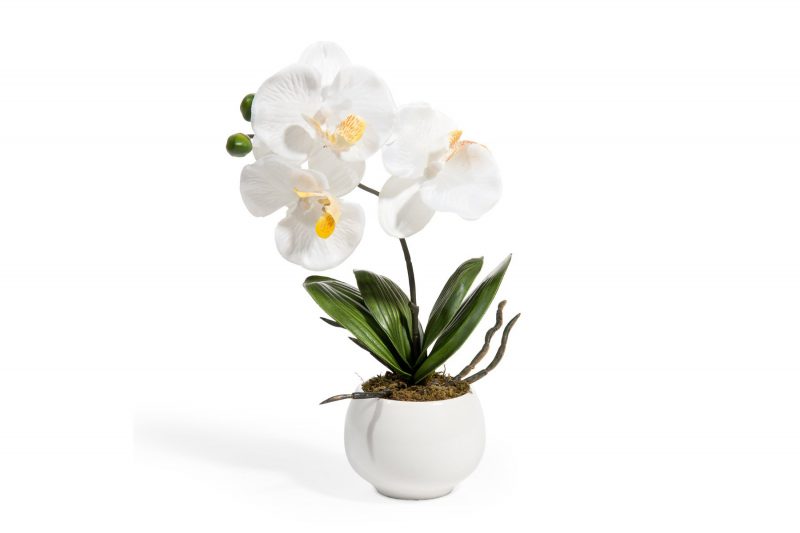
Orchid can be put on the table, bedside table, shelf. The main thing is away from other colors. It is important that the lighting is sufficient, but, at the same time, direct sunlight did not fall on the capricious beauty.
Quarantine lasts for 2-3 weeks. Periodically, the orchid is carefully inspected. Watering at this time is moderate.Fertilizers recommended in the store can be given.
When is a transplant needed?
In most cases, a plant brought from a store does not require a transplant.
But there are exceptions, for example:
- orchid planted in moss;
- obviously a small and uncomfortable pot - the orchid falls all the time;
- the soil is covered with white mold; treatment does not help.
Well, finally, the owners may have a desire to simply replace the pot with a more beautiful option. In any case, if you decide to move the flower, you need to follow the rules of transplanting orchids. About them - below.
Orchid care after purchase
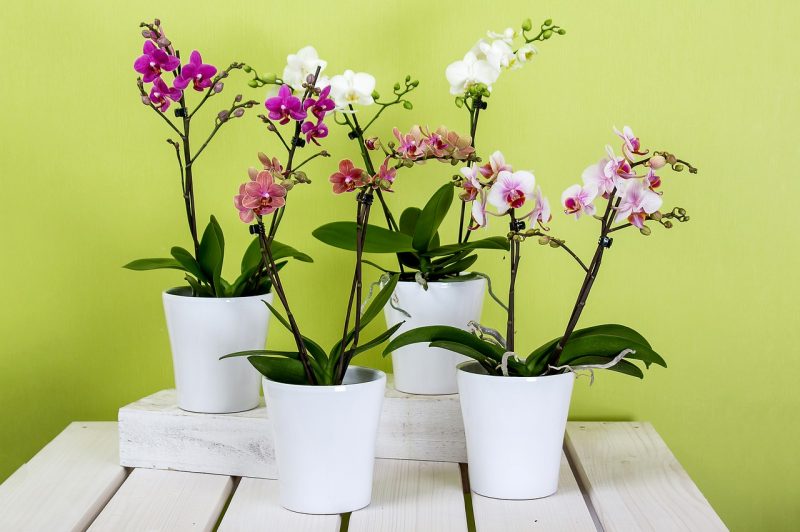
It is important to learn how to properly care for the orchid. Then the flower will only please.
Temperature, humidity and lighting
One of the main factors in plant well-being is proper lighting. Orchids have rather “harsh conditions”. She does not tolerate direct sunlight. This plant comes from southern countries, and there is an abundance of greenery, and the partial orchid always gets partial shade. Therefore, if the flower is intended to live on the windowsill of the window facing south, it can be separated from the glass with thin muslin, gauze, even translucent tracing paper.
But it is not necessary to darken the place where the plant will live. In this case, it will cease to bloom, stretch, the leaves will begin to lose their saturated color, turn pale.
Good a western or eastern window will do. During a short daylight hours, it is advisable to illuminate the orchid with a fluorescent lamp, bringing the length of daylight hours to 12 hours.
Also, the correct temperature regime is especially important for a flower. During the day, it is desirable that the air in the room be warmed up to 24-26 C, at night the temperature should drop to 14-16 C. In the warm season, the flower can be kept on the loggia or garden plot. There temperature differences will be provided. In winter, the room where the orchid is located can be aired at night.
However, it is undesirable for cold air from the window to fall on the flower.
In nature, orchids grow in tropical rainforests, so it is advisable to create similar conditions for them in the house. However, thanks to the care of the owners, the flowers receive enough moisture, both from the substrate and as a result of watering. Still, extra care is needed. Especially in winter, when indoor air becomes excessively dry due to steam heating batteries. To achieve the required humidity, the batteries can be covered with a cloth soaked in water - for example, thick towels, bedspreads. You can also purchase special humidifiers.
Watering a plant
It would be a delusion to consider that the soil in a pot with an orchid should be wet, almost wet all the time. Among the varieties of this plant there are those who love water more, and those who are less. But all orchids do not tolerate stagnation of moisture in the soil, their roots begin to rot.
Abundant watering should be in spring and summer, when the plant is gaining color, and directly when it is already blooming. In winter, an orchid is watered 1-2 times a week.
The best option for spring watering is the following: put the pot with an orchid in a container of warm water for 7-10 minutes. Or you can arrange a short shower for the plant.
Ground requirements and transplant
Today it is not a problem to provide an orchid with soil that is ideally suitable for it. The choice in the shops is great. Usually, the composition of the soil for orchids includes: charcoal, expanded clay, polystyrene, crushed coniferous bark and sphagnum moss.
Then pick up a new pot of sufficient size. In many cases, the best option is transparent containers with slots. You should also stock up on activated carbon, secateurs, and settling water.
In order not to damage the roots during transplantation, it is advisable to put the pot with an orchid in water - “soak”, and then carefully remove the plant.
Then you should carefully examine the root system.Rotten areas are cut off, sections are dried, sprinkled with crushed coal. If pests are noticed, the roots are treated with an insecticide.
Pruned under the root and old leaves - those that became lethargic, lost saturated color.
A new pot should not be too large, otherwise the orchid will grow foliage instead of flowering.
First, a portion of the substrate is poured onto the bottom of the pot. Then put a flower and add soil to the desired amount. You can crush, compact the soil, but only slightly. After a while, the plant itself will "fix" in a new place.
Water the orchid 5-6 days after transplanting.
Fertilizer and fertilizer
Naturally, the plant needs top dressing. There are special additives that are recommended in a flower shop - for example, Bon Forte. On packages recommendations for use are given. It is important to remember that it is impossible to overfeed a flower for good reason.
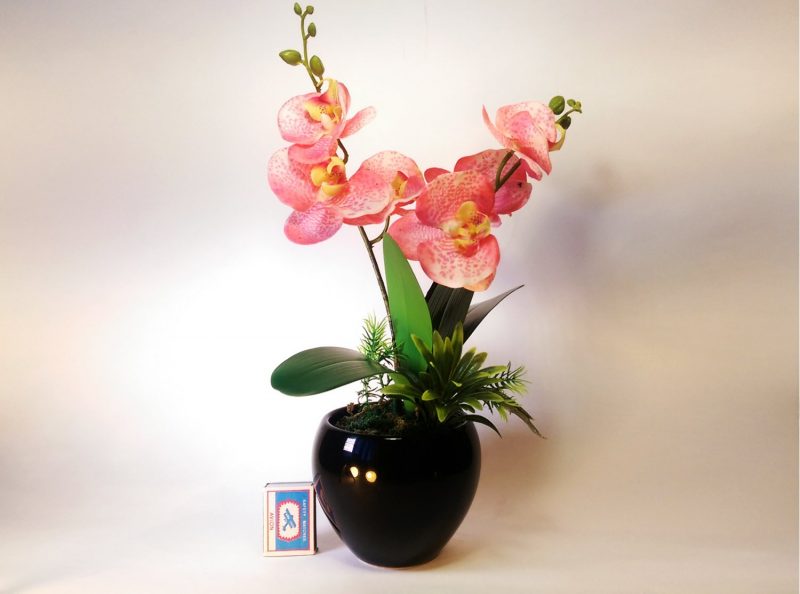
Fertilize the plant in spring and summer, winter is a dormant period.
Propagation of orchids at home
Reproduction allows you to increase your collection of orchids without unnecessary expenses. This is by no means a difficult matter.
Orchids can be propagated by children, layering, division.
Children, or lateral shoots, growing up, themselves give roots. Then you can carefully separate them and transplant into small pots.
For propagation by layering, a “mini-greenhouse” should be made: plastic containers, even simple bottles for drinks, are suitable. The greenhouse is placed over the bent part of the stem. It is necessary to ensure that there is sufficient humidity inside. Gradually, small plants with roots will appear from the buds. They are separated and transplanted. At first it is also advisable to keep them in greenhouse conditions.
In a vegetative way, or by dividing, orchids propagate during transplantation. It is necessary that on each of the separated parts there should be several bulbs. When dividing plants, slices are sprinkled with crushed charcoal. Then orchids are planted in the ground as usual.
The main problems in growing plants
You can sincerely wish that the novice florist does not come across them. But if they all appeared, how to deal with them?
Orchid does not bloom, dries
Most of all the owner is saddened by the situation when the orchid does not want to bloom. First of all, you need to figure it out - maybe the flowering period has just ended and the plant is in a “dormant” state.
More materials:why does the orchid not bloom
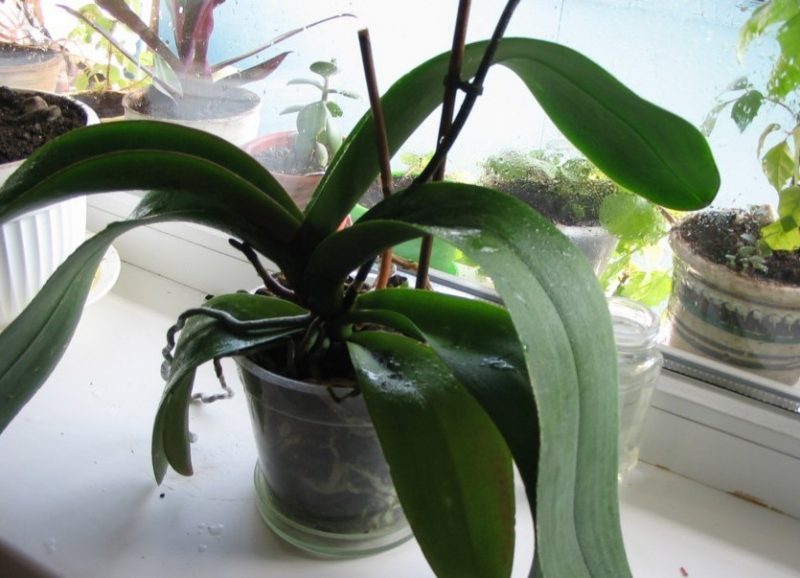
Another common reason is a lack of light. If the flower stands on the north window or the daylight hours are too short, it is recommended to use fluorescent lamps.
Flowers may be missing due to the fact that the orchid is transplanted into an oversized pot. If its root system is damaged and the plant dries. And also in the case when the green pet is not provided with a temperature difference: during the day the room should be warm enough, and at night the orchid needs cool air at a temperature of 14-16 C.
And finally, the plant may be still too young for flowering. In this case, you just have to wait a year.
Leaves turn yellow - causes and solutions
Orchid leaves turn yellow quite often. This may be due to preparation for the rest period, that is, you should not worry.
It is possible to understand that the process is natural by the sign that the lower leaves closest to the roots begin to turn yellow. They are the oldest and die off. Completely dried leaves are removed.
But if young leaves begin to dry, or if the phenomenon occurs in spring, you should check whether you overdid it with watering? Stagnant water leads to rotting of the root system, and the plant may die.
However, excessively dry indoor air can also cause yellowing of the leaves. In this case, spraying from the spray gun will help the orchid.
Also, you can not keep the capricious beauty in the drafts and put her in a darkened place. All this can lead to the fact that the leaves become yellow.
Plant viral diseases
If the shape and color of the orchid has changed - it can be infected with a virus. It is easy to bring it when processing a flower with infected tools. The virus will be transmitted to other colors if watering is carried out in a common capacity.
The diseased plant is separated from the rest, treated with an antibiotic and then a fungicide.
The most common orchid pests
The most common pests that can appear on an orchid are spider mites and mealybugs. If other domestic plants do not have them, it means that the flower was brought from the store already infected.
With a small degree of damage, the orchid is treated with a soap solution, they are rubbed with leaves. Of chemicals, Fitoverm will help.
Nuances of orchid care phalaenopsis dendrobium
Proper care will allow the orchid to delight the owners with its flowering for 7-8 years.
Orchid Dendrobium Phalaenopsis requires certain nuances in the conditions of detention. Although this hybrid is easier to care for than a number of varieties.
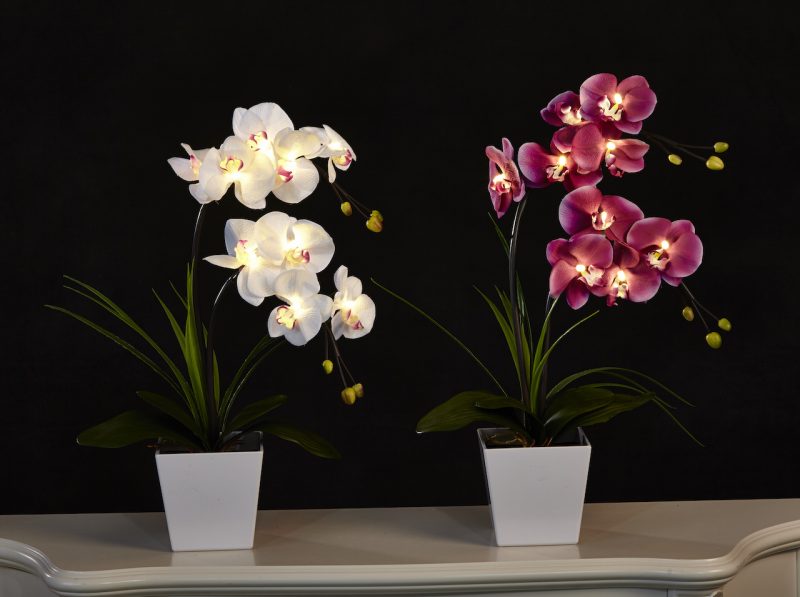
In winter, it almost completely stops its growth, this is the period when the orchid should not be disturbed by either excessive watering or top dressing. Temperature in winter is desirable around 18 C.
In spring, the plant starts growing, the air should be warmed up to 25 C, and humidity should reach 70-80%.
Lighting needs to be correlated with watering. With abundant watering and keeping in an insufficiently lit room - the moisture stagnates, the roots rot. When in a well-lit room with dry air, in addition to watering, the orchid needs to be sprayed.
It is advisable not to use tap water without first settling. You can determine if hydration is required by sticking a wooden stick in the pot. If it was taken out dry - watering is necessary.
Orchid can rightfully be called one of the most beautiful flowers. Proper plant care will allow you to enjoy flowering for many years.












